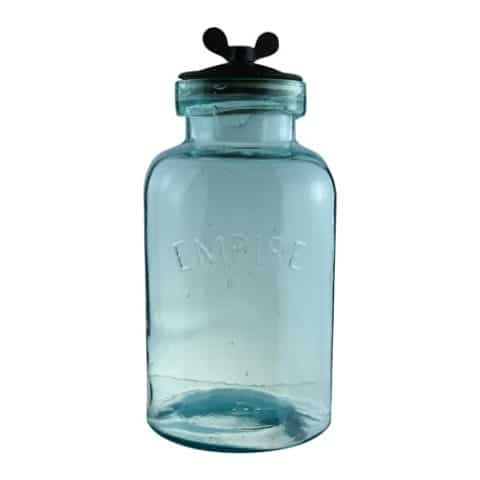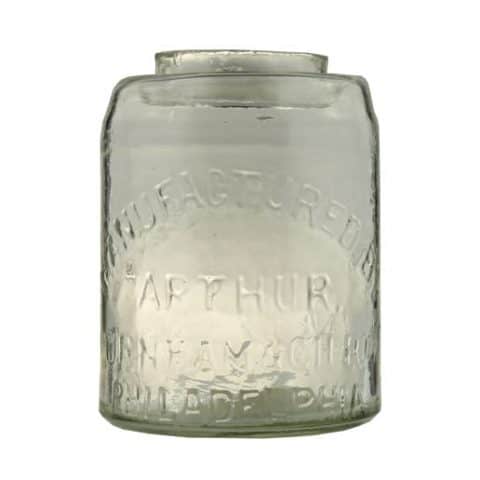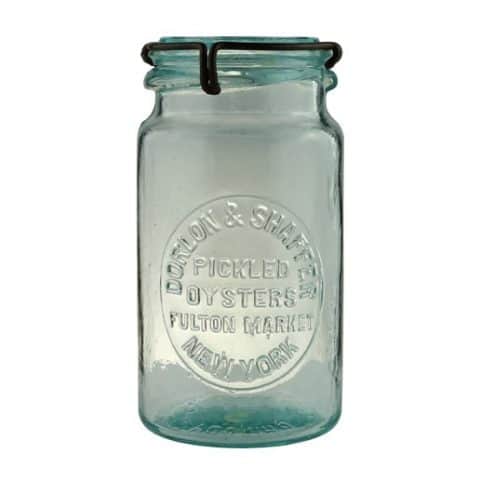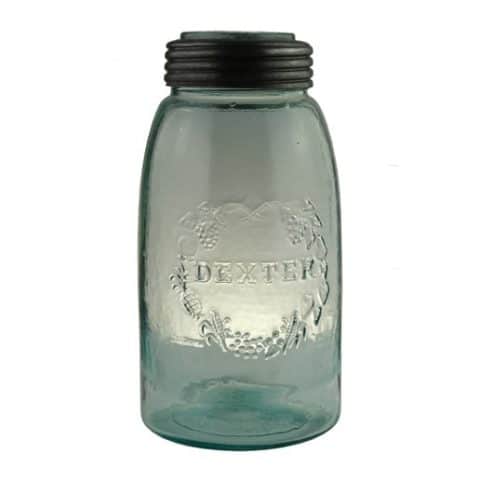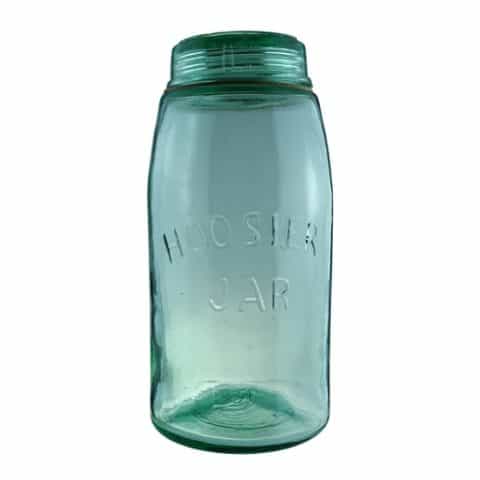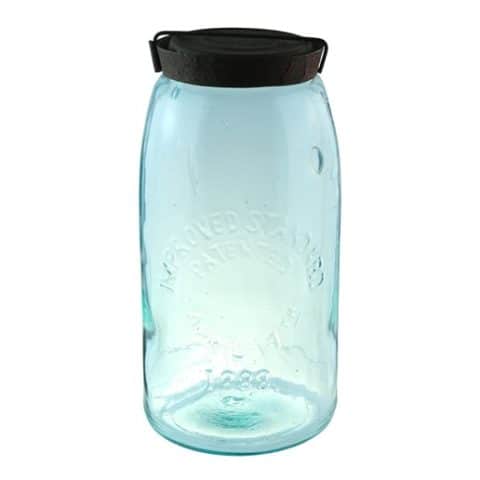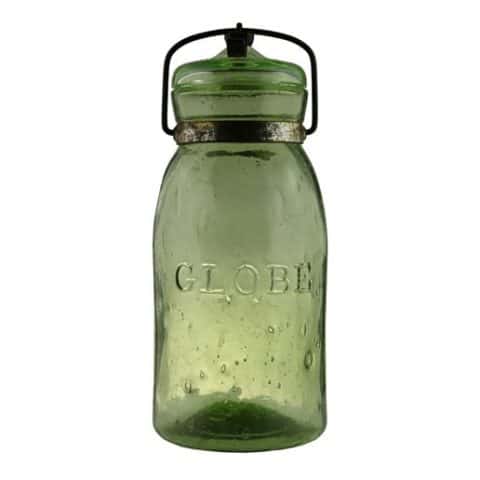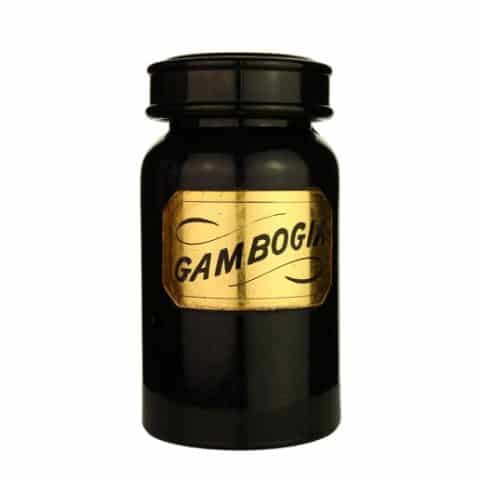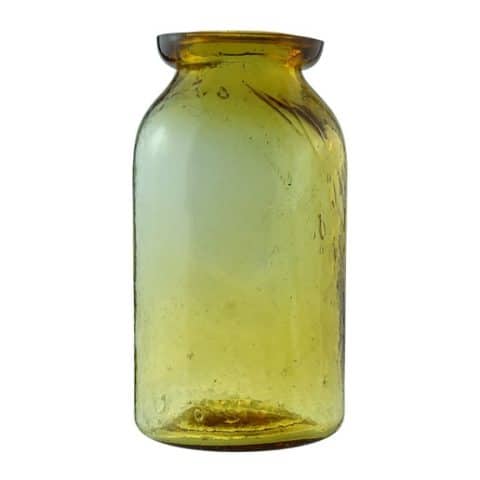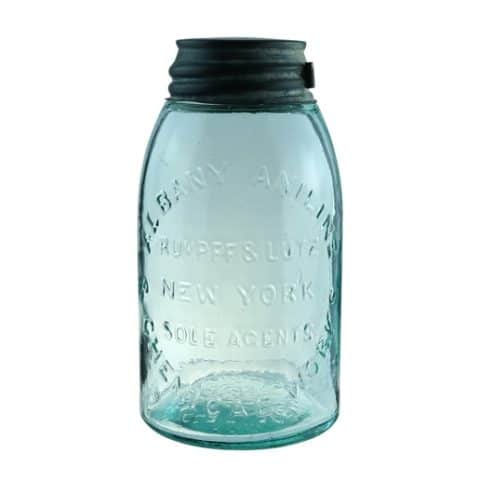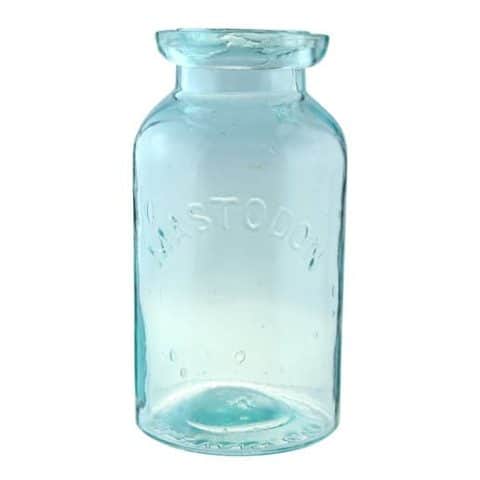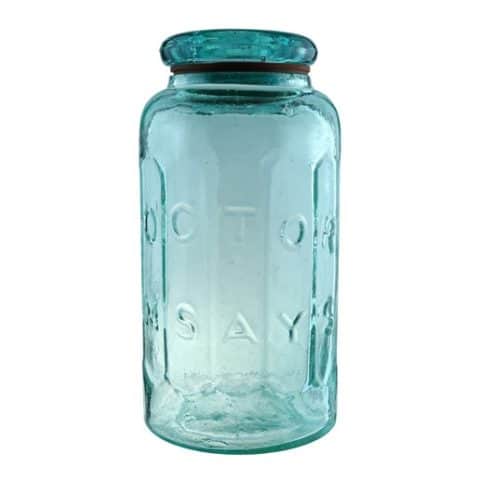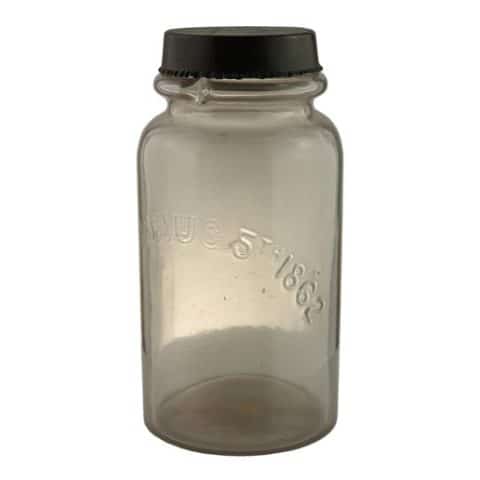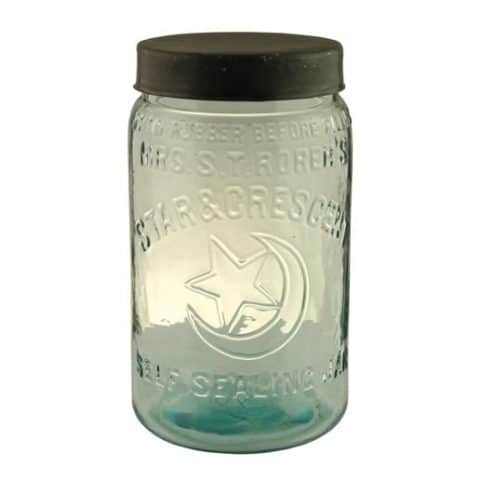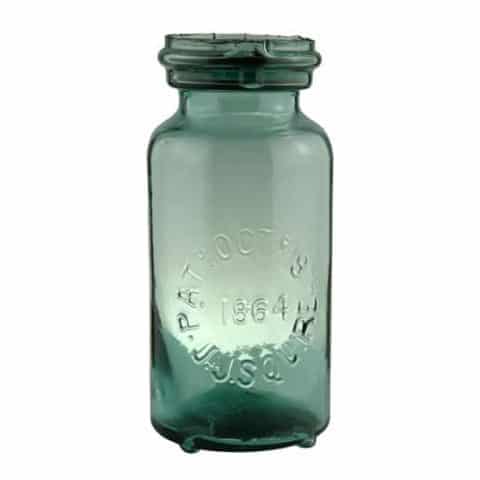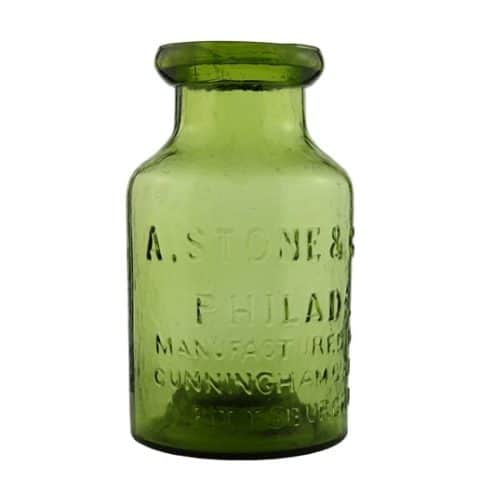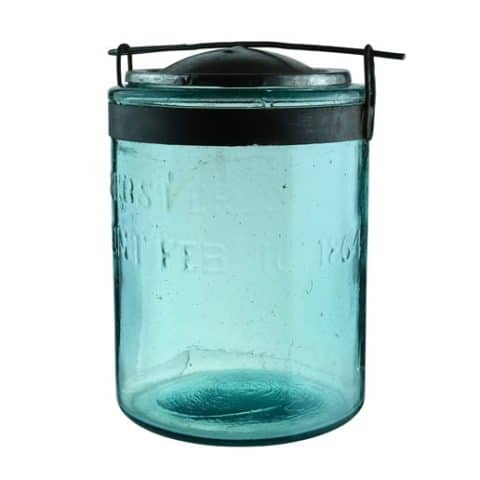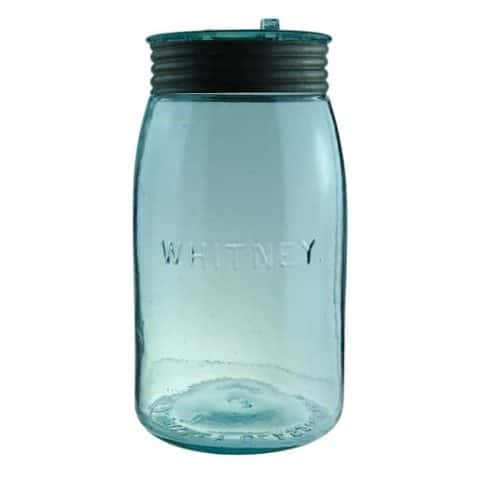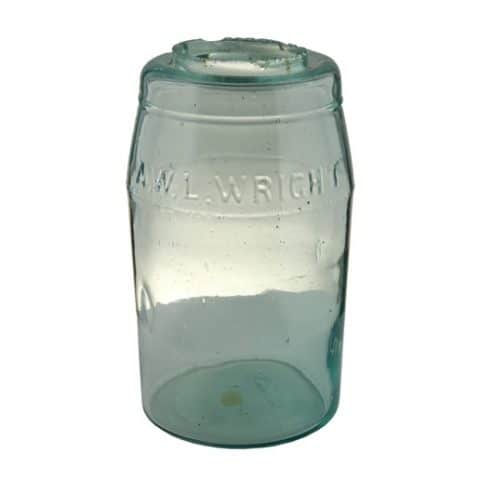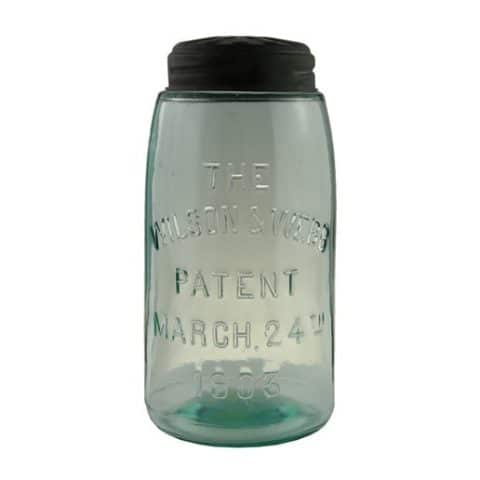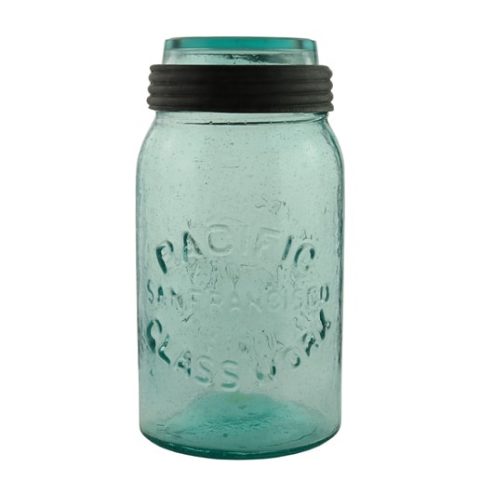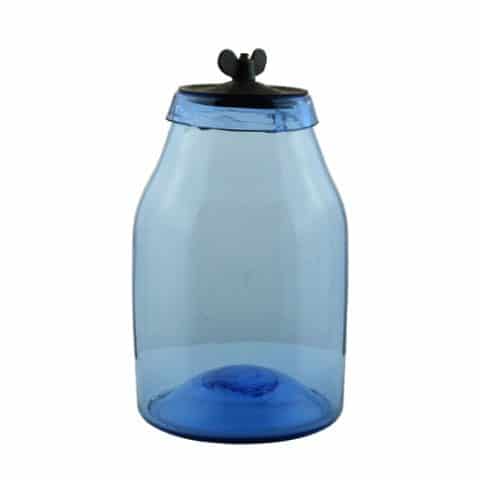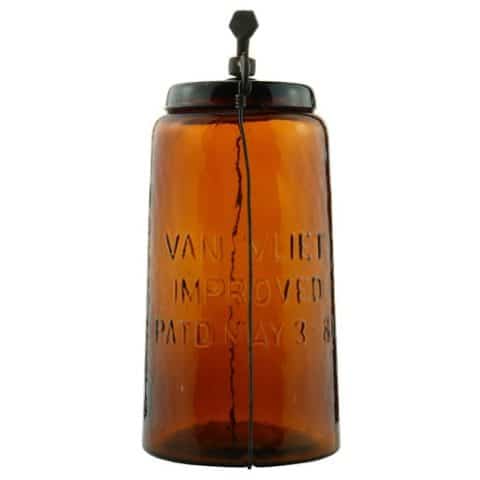Denver Jar
Denver Jar
Proprietor and Maker Unknown
Aquamarine Pint
Provenance: Phil Smith Collection

Our embossed “Denver Jar” is somewhat of an enigma. Only three aqua quart jars are reported in collections. In 2008, at the Saint Louis Antique Bottle Show, the only known midget pint sold for $6,500. Several other collectors were in line to purchase the extremely rare aquamarine jar.
The Mason type jar is hand-blown with a ground lip. The closure is a shoulder seal with a zinc screw cap and lug with a white milk glass liner. The base is smooth. The minimal embossed copy on the jar side reads ‘DENVER’ in a convex arch centered over straight line horizontal copy that reads ‘JAR.” A simple sans serif typestyle was used. The proprietor and maker is unknown for this mid-to-late 1880s jar.

In a February 28, 1887 letter to Charles Yockel, a Philadelphia, Pennsylvania mold maker, the Colorado Glass Works in Golden, Colorado, near Denver ordered “Mason Fruit Jar Molds.” Since the Colorado firm’s letterhead listed fruit jars among its wares, they may have made the “Denver Jars.” Golden is west of Denver city center and was a gold rush town at the foothills of the Rocky Mountains. Charles Yockel was a German immigrant who made molds and presses for glass bottle and jar manufacturers. His business was first listed in the Philadelphia, Pa. City Directory in 1862, when he initially worked with business partner John Weidig. Yockel’s sons eventually took over the company, which operated until the mid-1940s.
Of course, there are other “Denver” locations in the United States, such as Denver, Kentucky, an unincorporated community; Denver Township, Isabella County, Michigan; Denver Township, Newaygo County, Michigan; Denver Township, Rock County, Minnesota; Denver, Missouri, a village; Denver Township, Adams County, Nebraska; Denver, North Carolina, a census-designated place and unincorporated community; Denver, Ross County, Ohio, an unincorporated community; Denver, Wood County, Ohio, an unincorporated community; Denver, Pennsylvania, a borough; Denver City, Texas, a town and Denver, West Virginia, an unincorporated community, to name a few.
Another possibility might be the Colorado City Glass Co. (CCGCo) factory which began production of fruit jars and bottles using light green aquamarine glass in May 1889, with an initial workforce of 52 glass blowers. Colorado City is a little over 40 miles south of Denver. The 1889 Aspen Daily Chronicle stated that General Charles Adams journeyed to La Salle, Illinois, and brought 52 German glass blowers from De Steiger to work in Denver.
A May 17, 1889, post in the Colorado Springs Gazette described the process of glass blowing at the CCGCo’s factory’s first day of operation: On the platform at the head of the furnace stand were the glass blowers. Beside each is a small wooden rack, and at his feet, a mould which opens and shuts by means of a treadle. Each blower also has beside him a young man called a blower. In the furnace are small openings about six inches square. Into these, the helpers first put the blow pipe, a cylinder of iron about four feet in length. The glass adheres to the end of the pipe and is then taken out. Instantly the blower puffs a breath of air through the pipe, and the glass becomes hollow and pear shaped. Then the blower takes the pipe and shapes the bottle, finally putting it into the mould where it is gradually turned and blown until a perfect bottle is formed. Next, a boy presents a sheet iron cylinder into which the bottle sits. It is then cut away from the blowpipe and stuck into the furnace, where a bit of glass adheres. From this, the blower forms the head of the bottle. Next, it is handed to the boy, who places it in one of the annealing ovens. Here it is kept for three days under a slow fire to temper. If the bottle is perfect after being taken from the oven, it is accepted and is then ready for the market. Maybe one of the pieces was our “Denver Jar.”
Primary Image: The “Denver Jar” imaged on location by Alan DeMaison, FOHBC Virtual Museum Midwest Studio.
Support: Reference to A Marked Coincidence: The C.C.G.CO. Logo of the Colorado City Glass Co. and Cream City Glass Co. Part 1 – Colorado City Glass Co. by Beau Schriever, Bill Lockhart, Carol Serr, and Bill Lindsey
Support: Reference to Fruit Jar Annual 2020 – The Guide to Collecting Fruit Jars by Jerome J. McCann
Support: Reference to Red Book No. 12, the Collector’s Guide to Old Fruit Jars by Douglas M. Leybourne, Jr.
Join the FOHBC: The Virtual Museum is a project of the Federation of Historical Bottle Collectors (FOHBC). To become a member.











